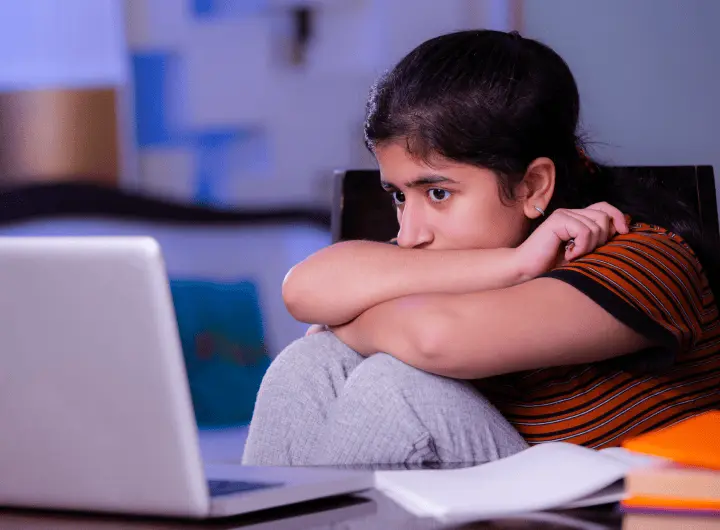Healthy Screen Habits – Act Early, Act Together

Concern about screentime dates back decades to worries that children were spending too much time watching television. As televisions were installed in children’s bedrooms and became the focus of family dinners, experts worried that children would lose the ability to entertain themselves, play independently or be physically active.
Children born in 2025 will live in an environment saturated with electronic devices. Technology permeates almost all aspects of our lives. Technology misuse is considered an emerging threat to the healthy development of canada’s children 1.
Following extensive consultation with experts, parents and youth, a special commission in québec made wide-reaching intersectoral recommendations designed to ensure that young people are enabled to become digitally literate, to benefit from technology, while facilitating healthy development 2.
In 2025, canadian parents routinely rely on technology in monitoring their sleeping little ones, in connecting with friends, family, and colleagues, in remote work, shopping, as well as for fitness and entertainment. As adults we’re delighted to learn innovations in finding information, and the tasks that can be completed on digital devices.
On the other hand, we lament the time we waste scrolling, the loss of boundaries as we are bombarded with notifications, messages and ads, the increased sedentary time, disturbed sleep, exposure to upsetting material, the loss of face-to-face contact, the frustrations of lost passwords, and the anxieties of privacy breaches.
Children are drawn to screens that captivate their attention. Technology is well-designed to maintain involvement so it’s easy to prolong a screen session, with one more song, one more site, one more round, or one more level.
Like adults, children are vulnerable to all the dangers adults face in navigating the digital world. It is clear that children need adults to help them develop planning, self-regulation, and critical thinking skills to deal with digital media on their own.
Contradictory messages
Parents are bombarded with (sometimes contradictory) messages about the ways to address screentime with their children. Advertisers promote the benefits of security, safety, stimulation, learning and entertainment.
Influencers may also share ways that screentime can be used to soothe or distract an upset child, or to reward a child who has been behaving well.
Other sources in print and social media warn of dangers of screentime. Parents can often feel anxious, helpless, or unsure how to handle the situation.
What does the research tell us?
Thousands of studies have examined the ways that screentime affects children’s development. Canadian researchers have been at the forefront of synthesizing these findings 3, 4.
The effects of exposure to screens on the developing brain are clear. If we delegate our caregiving responsibilities to technology, we risk children’s emerging development of language and social skills.
The effects of screentime can be understood in terms of the content of what children see and the context in which they are viewing. As children engage in social media, they may be exposed to both positive interactions with others, and material that harms their self-esteem and well-being.
While the warning flags and signs of danger are worrying, science also provides hope. Many of the determinants of screen use are modifiable parent factors 5. There’s also evidence that small changes can make a big difference 6.
Clear guidelines
Fortunately, experts have moved beyond simple debates about whether screentime is harmful or beneficial to an understanding of the complexities of the issue. Evidence-based policy statements recognize both the benefits and risks of screentime. Ensuring healthy screen habits is a public health issue that requires collective action, involving parents, schools, and communities.
Helping children develop healthy screentime habits is recognized as a parental responsibility (like developing healthy eating and exercising and treating others with kindness and respect).
The canadian pediatric society has taken a leadership role in providing clear guidelines that distinguish between the needs of young children, school age children and teens 7. Healthy use of screentime requires active parental engagement, by setting a good example in use of screens, creating a family media plan, encouraging meaningful use of screens and discussing concerns. A resource library offers materials for practitioners, parents, and policymakers 7.
Communities need to invest in initiatives that provide children with the opportunities to develop skills in non-screen activities like physical activity, risky play, unstructured creative activities, and direct interaction with their peers 2.
The limits of bans….
Paradoxically, banning something does not make it go away. For both adults and children a ban can make something even more appealing. Because technology with its numerous potential benefits is here to stay, it is impossible to eliminate it from children’s lives.
We need to learn how to live with technology in a healthy way, to optimize the benefits and mitigate the risks to our physical and mental health. This requires realistic expectations and the tools to develop healthy screen habits.
Triple P programs have demonstrated for decades that encouraging the behaviours we’d like to see in our children is more effective than focusing on negatives.
Alternative skills
When it comes to screentime, we’d like adults and children to develop digital literacy. This means knowing how to use technology safely, without harm to themselves or others.
It also means learning how to view digital material critically. Adults and children need to set limits on technology use so that they can maintain healthy eating, healthy social interaction, physical activity, time in nature and the ability to find engaging activities.
Putting it all into practice: how Triple P can help
The idea of limits of screentime is not new. Data indicate that many canadian children have excessive access to screens, without adequate support and guidance. One possible explanation for this is that although parents may understand the need for limits, they have difficulty putting them into practice. The challenges may come in making a family plan, in discussing it with children, in finding non-screen ways to keep children busy, or in responding when a child protests a limit.
The Triple P suite of programs offers parents practical tools to establish healthy habits in their toddlers, preschoolers, elementary school age children and teens. Triple P offers parents practical strategies to put abstract ideas into action. Parents have the opportunity to practice skills in establishing family rules, in encouraging their children to adopt them, and a plan for following up.
Triple P programs encourage parents to provide a positive learning environment for their children that allows them to explore, learn and thrive.
A new Triple P seminar focused exclusively on healthy screentime habits is now available. Developed by our research team in response to this growing concern, the seminar reflects a commitment to supporting families and professionals with evidence-based strategies.
Trained practitioners deliver the seminar to groups of parents, facilitating discussion and answering questions. Parents receive a tip sheet covering the material. The seminar is accessible and flexible, suitable for various educational and community settings or online delivery, which helps reach families and supports organizations in encouraging healthy screen habits.
Those parents who require further support in putting these ideas into action can benefit from one of the other Triple P programs that have helped parents around the world.
Early childhood is a key time to instill healthy screen habits. By providing tools to parents, teachers, and practitioners, we reduce the risk of harmful habits and optimize positive, healthy, educational and fun experiences with technology.
Triple P offers those caring for children concrete strategies, backed by research to help our children interact effectively in a digital world.
References
- Children’s First Canada (2025). https://childrenfirstcanada.org/campaign/raising-canada/
- Assemblée Nationale du Québec (2025). Rapport de la Commission spéciale sur les impacts des écrans et des réseaux sociaux sur la santé et le développement des jeunes. https://p.communications.assnat.qc.ca/csesj
- Madigan S., McArthur B.A., Anhorn C., Eirich R. & Christakis D.A. (2020) Associations Between Screen Use and Child Language Skills: A Systematic Review and Meta-analysis. JAMA Pediatrics, 174(7):665–75. doi:10.1001/jamapediatrics.2020.0327
- Madigan S., Eirich R., Pador P., McArthur B.A. & Neville R.D. (2022). Assessment of Changes in Child and Adolescent Screen Time During the COVID-19 Pandemic: A Systematic Review and Meta-analysis. JAMA Pediatrics,176(12):1188–1198. doi:10.1001/jamapediatrics.2022.4116
- Pyne, B., Asmara, O. & Morawska, A. (2025). The Impact of Modifiable Parenting Factors on the Screen Use of Children Five Years or Younger: A Systematic Review. Clinical Child and Family Psychology Review 28, 458–490 (2025). doi.org/10.1007/s10567-025-00523-9
- CHEO Research Institute (June 19, 2024). Cutting social media use back to one hour a day boosts mental health and sleep in youth. https://www.cheoresearch.ca/about-us/media/news/cutting-social-media-use-back-to-one-hour-a-day-boosts-mental-health-and-sleep-in-youth/
- Centre for Healthy Screen use. Canadien Paediatric Society (2025). Resource Library. https://healthyscreenuse.cps.ca/families-and-communities/resource-library

